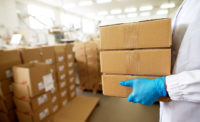I have been working with a client that brought on a new management team that didn’t have a lot of experience with food manufacturing. They were in turn-around mode and needed to figure out the return on investment (ROI) for each part of their operation. I was asked how they could calculate the ROI for their Food Safety and Quality teams and programs (FS&Q). It is a good question, one that isn’t asked enough by senior management. We can track yields and loss at each step in our operation, but what value, if any, has your FS&Q team added?
I have noticed over the years that senior managers don’t usually measure the ROI of their food safety and quality teams and programs. I have been given several reasons, including: We must do it, it’s a cost of doing business; our customers want us to have this or that system so we just do it; the government makes us; and on and on it goes. A typical response when I ask a FS&Q professional what value they bring to their company is, “A lot.” When I ask them to quantify their answer, I usually get either a blank stare or comments about how many checks are performed.
So how do we measure ROI for FS&Q?
It is often very difficult to quantify your return on investment for your FS&Q team and programs. Much like training, you know it affects your ROI, but most of us haven’t developed metrics to measure it. To measure anything, we must have metrics, or the criteria, to measure against. The key is being consistent across your company, i.e. you want to be able to compare apples to apples. An example is how to you compare the ROI from your training department, human resources department, administrative teams, etc.? These departments are integral to the company’s success, but often aren’t held to the same standards. If you develop your metrics so you are consistent between the “Non-Production/Non-Sales” departments you will get a much better feel for where to place or withhold resources.
One way to measure the return on investment is to look at your FS&Q team as part of your sales team. Typically, your director or VP of FS&Q should point outward from your company more so than inward. He or she should be the person who assures the world your products aren’t just safe, but meet the quality standards your customers expect. Then ask: Are we getting our message out to our customers that our products won’t just meet but exceed their specific standards? Is this message driving new sales and bringing us repeat customers? After you quantify it, you can then either ROI FS&Q as a sales force multiplier or as a direct sales cost component and make your determination.
Another way to measure ROI for the FS&Q team is to remove the FS&Q team functions from your daily operations and determine what you have left. For example, if you have a specific quality assurance (QA) tech who performs quality checks on a line, if he or she is removed, what is the cost of the outcome? Would your customer still purchase your products at the same cost, or would the reduction in quality feedback to operations result in a lower quality/less valuable product, or would they drop your product altogether? Based on what you determine, you can set a factor against the QA position and the specific functions against added value to the product. Run that against all FS&Q positions and you can determine what they contribute to the bottom line.
I have had senior managers express that they don’t consider their FS&Q teams to have an ROI daily, but instead measure it as insurance against a recall/foodborne outbreak. Using this model, you determine the ROI the same way you do on your insurance policy, i.e. what is my risk and how much am I spending to mitigate that risk at the catastrophic level? Determine the costs associated with a recall or associated foodborne outbreak for your primary product against the cost of the FS&Q team and you can again calculate what the return is.
There are multiple ways to measure ROI, and we all have our favorites. Pick one and go with it.
What comes next?
A natural outcome of calculating the ROI of your FS&Q team is to develop strategic plans for increasing the ROI. It is typical for a food manufacturer to put in a check, product criteria or other event that over time becomes unneeded; however, very seldom is the unneeded check removed from the team’s daily functions. Your QA team marks X because a customer required it 20 years ago, but the requirement it was based on is no longer in play. Yet we still pay people to perform those checks. On a strict ROI basis, you are wasting resources.
A good exercise for the FS&Q team is to break down its core functions and processes by regulatory, customer-driven and internal requirements. Then have team members identify the base requirement for the function. What are the exact regulatory requirements? What functions are tied to that requirement, and are they truly requirements or are we just doing them because we always have? Take the same approach with your customers’ requirements. Do the requirements even still exist? Do you still sell to that customer? For internal requirements, I remember a company that manually weighed 25 cases of eggs from every load, even though they had installed an automatic scale that every case coming off the truck went over. When I asked why they were taking 20 minutes per load to weigh cases individually I was told because they had always done it that way. They received between 10 and 12 shipments a day. They were wasting a minimum of three hours of employee time every day. Over a year, that can add up to a substantial waste of resources.
Often, your team will find the requirement for a function no longer exists. If it doesn’t, why are they still doing it? Get rid of it.
Added benefits
After they have removed the wasted functions, the team can move forward with making the functions that remain more efficient.
For example, I often see FS&Q personnel take room temperatures only to later discover the facility has a state-of-the-art room temperature and humidity monitoring system that they test, so why two checks? “Because we have always done it that way” is the usual response. Inspectors can also resist change by asking how you know the automated system works. I typically respond firmly that the automated check is sufficient for the data’s use.
Don’t forget sales
Remember, your FS&Q department is your ultimate sales team. If its members aren’t on their game and you ship product that is out of specification, you may lose that customer. The next question is how to package and sell your great FS&Q team and program?
I have seen a lot of different ways to increase sales by leveraging food safety. Have your director attend and speak at as many industry meetings and seminars as possible. Include FS&Q information in your sales literature, add a member of the FS&Q team to the sales team for large clients. Include FS&Q in sales training and integrate the sales and customer support teams.
You have a lot of options but it is critical that you utilize the one that fits best, and then leverage it.
In the end
As with any part of the company, the FS&Q team must carry its own weight, and what exactly that is can only be determined by using measurable criteria. After you finish working your way through the actual ROI for your FS&Q team, you may find yourself surprised, hopefully pleasantly, with the results.
The clear majority of clients we work with have outstanding FS&Q teams and programs. Unfortunately, too often they aren’t being leveraged to increase the company’s bottom line or given the credit and resources commensurate with their impact. NP







